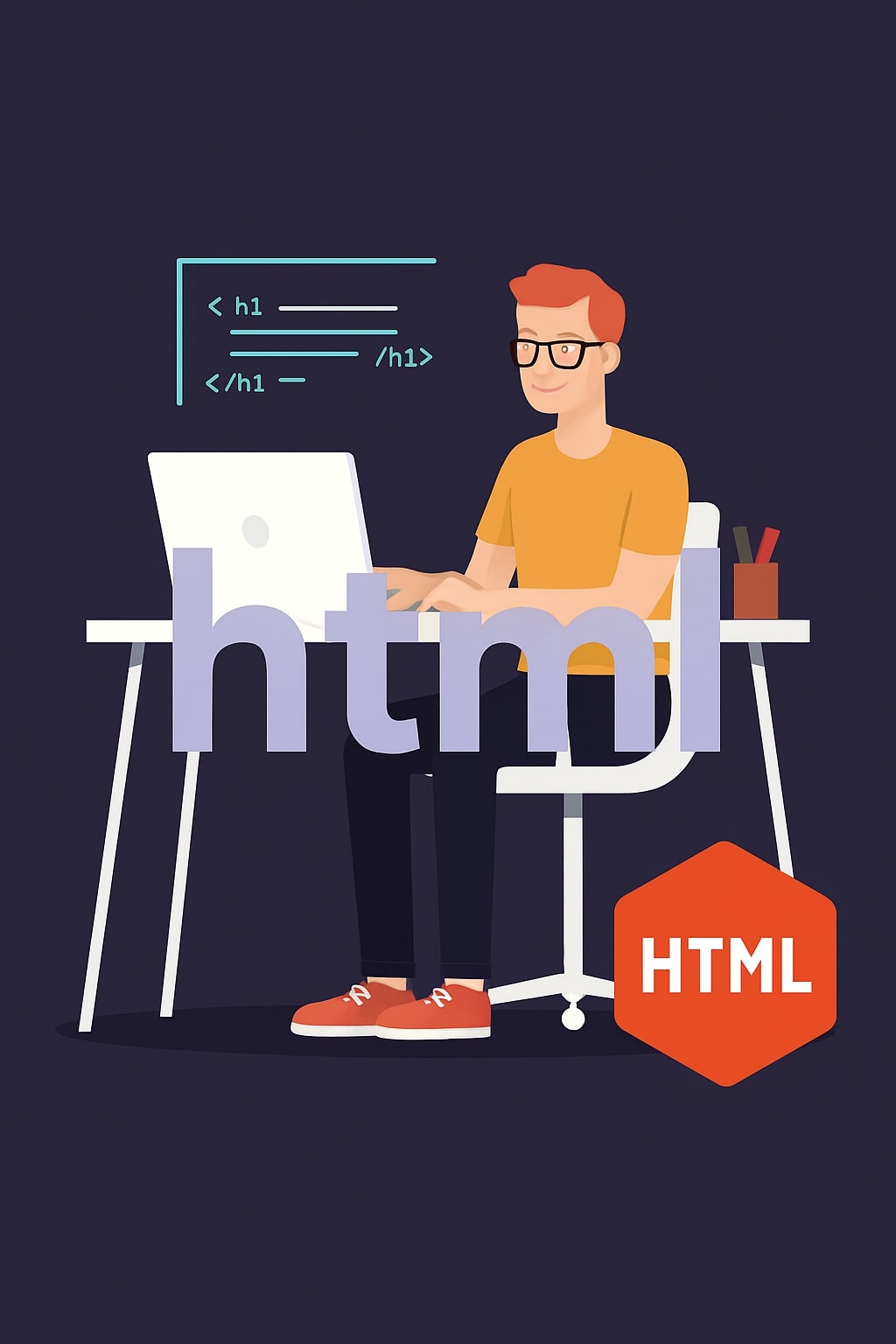Updated on 26 Sep 2025 by Admin
Getting started with HTML
Understanding HTML: The Foundation of the Web
Introduction
HTML, or HyperText Markup Language, is the backbone of the World Wide Web. It is the standard markup language to create and structure web pages. If you create a simple personal blog or a complex web application, HTML will be the core of whatever the user interacts with. An in-depth overview of HTML is in this article, including its history, structure, applications, and importance in modern web development.
HTML is not a programming language; it is a markup language with the primary function of formatting content on the World Wide Web. It defines elements such as headings, paragraphs, images, links, lists, etc., allowing browsers to convey that information to human beings.
Example
<!DOCTYPE html>
<html>
<head>
<title>My First Web Page</title>
</head>
<body>
<h1>Welcome to My Website</h1>
<p>This is a simple HTML document.</p>
</body>
</html>
In the above example, each tag has a specific meaning which the browser already understands, at the end web browsers are also software which are coded such that they have ability to understands the HTMl, CSS, and Javascript and render the web page to the user.
2. History of HTML
HTML was invented by Tim Berners-Lee in 1991 while working at CERN. The first version, HTML 1.0, provided basic formatting features. Eventually, HTML evolved through several versions:
- HTML 2.0: Standardization of the initial set of features in 1995.
- HTML 3.2: Additions of scripting and styles by 1997.
- HTML 4.0.1: By 1999, it was the most widely adopted version placing emphasis on separating content from presentation.
- XHTML: A stricter version based on XML 2000.
- HTML5: The present standard completed in 2014 with multimedia, semantic elements, and better device support.
HTML5 represents a major advancement with rich audio, video, graphics features, and so on-all handled natively without extra plugins in the browser.
3. Syntax and Structure of HTML
HTML uses tags separated by angle brackets (< >) to identify elements. Most tags use an opening tag (like <p>) followed by a closing tag (like </p>), though some tags are self-closing, <img > for example.
Basic Structure:
<!DOCTYPE html>
<html>
<head>
<meta charset="UTF-8">
<title>Sample Page</title>
</head>
<body>
<h1>Main Heading</h1>
<p>This is a paragraph of text.</p>
<a href="https://example.com">Visit Example</a>
</body>
</html>
- <html>: the tag that starts everything.
- <head>: contains metadata, such as title and character encoding.
- <body>: serves as container for what will be seen by users.
4. HTML Elements and Tags
HTML includes a wide range of elements for different purposes:
Text Elements
- <h1> to <h6>: Headings
- <p>: Paragraph
- <strong> and <em>: Bold and italic text
- <br>: Line break
Lists
- <ul>: Unordered list
- <ol>: Ordered list
- <li>: List item
Links and Images
- <a>: Anchor tag for hyperlinks
- <img>: Embed images
Forms
- <form>, <input>, <textarea>, <button>, <select>, <option>
Semantic Elements (HTML5)
- <header>, <footer>, <article>, <section>, <nav>, <aside>
5. HTML and CSS: A Powerful Duo
HTML defines what appears on the page, while CSS defines how it looks.
<p style="color: blue; font-size: 18px;">Styled paragraph.</p>
A better practice is to use external CSS files:
<link rel="stylesheet" href="styles.css">
And in styles.css:
p {
color: blue;
font-size: 18px;
}
6. HTML and JavaScript: Adding Interactivity
HTML provides the structure, but JavaScript adds interactivity.
<button onclick="alert('Hello!')">Click Me</button>
7. Responsive Design with HTML5
Modern web design must be responsive. HTML5 and CSS3 support this through:
<meta name="viewport" content="width=device-width, initial-scale=1.0">
- Flexible grid layouts
- Media queries
8. Accessibility in HTML
Good HTML should also be accessible. HTML5 supports ARIA roles and semantic tags that assist screen readers.
- Use <label> for inputs
- Use semantic regions like <main> and <nav>
- Use
alttext in images
9. SEO and HTML
HTML helps search engines understand your content. Use proper semantic structure and metadata:
- One <h1> per page
- <meta name="description"> for summaries
- Use human-readable URLs
10. Modern HTML Best Practices
- Use HTML5 doctype:
<!DOCTYPE html> - Use semantic tags
- Validate with the W3C Validator
- Use external CSS/JS
- Keep clean and indented code
Conclusion
Web development is basically driven by HTML. Mastering HTML is essential for well-structured, accessible, and user-friendly websites. Although web technologies keep changing, HTML still plays an important role in everything from basic layout to modern responsive and interactive applications.
Learn HTML from scratch with our in-depth guide! Discover the fundamentals of HyperText Markup Language (HTML), including tags, elements, attributes, and best practices for building responsive and SEO-friendly websites. Whether you're a beginner or an experienced developer, this article covers everything you need to master HTML and improve your web development skills. Start coding today!
